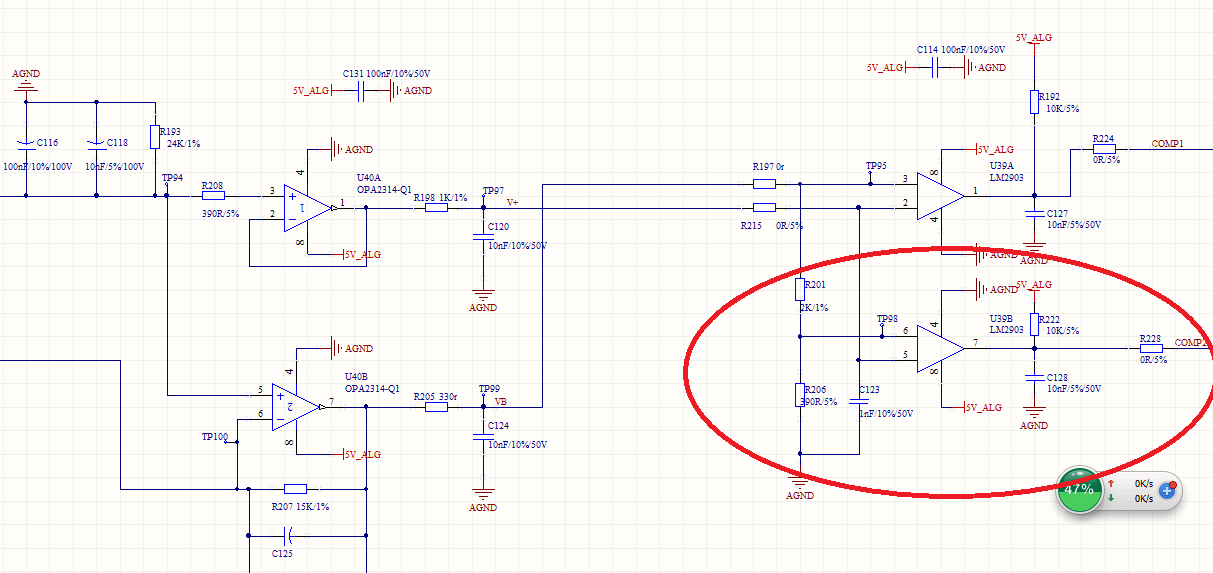Other Parts Discussed in Thread: LM2903
Dear sir
I use LM2903-Q1 in a new project. There is something that i think is unnormal .
Testing process & data
LM2903 PIN 5 (IN+) PIN6(IN-) PIN7(OUT)
Votage: 682mv 690mv 149.5mv
685mv 690mv 200mv
687mv 690mv 1.2v
689mv 690mv 1.85V
692mv 690mv 2.36v
694mv 690mv 2.74v
696mv 690mv 3.26v
698mv 690mv 3.8v
700mv 690mv 4.8v
As the test result, i had some questions:
1,Why does it output: 1.2v 1.85v 2.36v....?The out put always 0V or 5V,isn't it?
2,If the output is between 1V-3V ,how can the MCU recognition the output votage as High level or Low level?
3,If the output data is unnormal,could you please give me some proposal to resolve it? I had try to decrease C128 to 10pf or remove C128 or crease R222 to 20K, the result had not improve.
Please reference below SCH.
Thank you!


